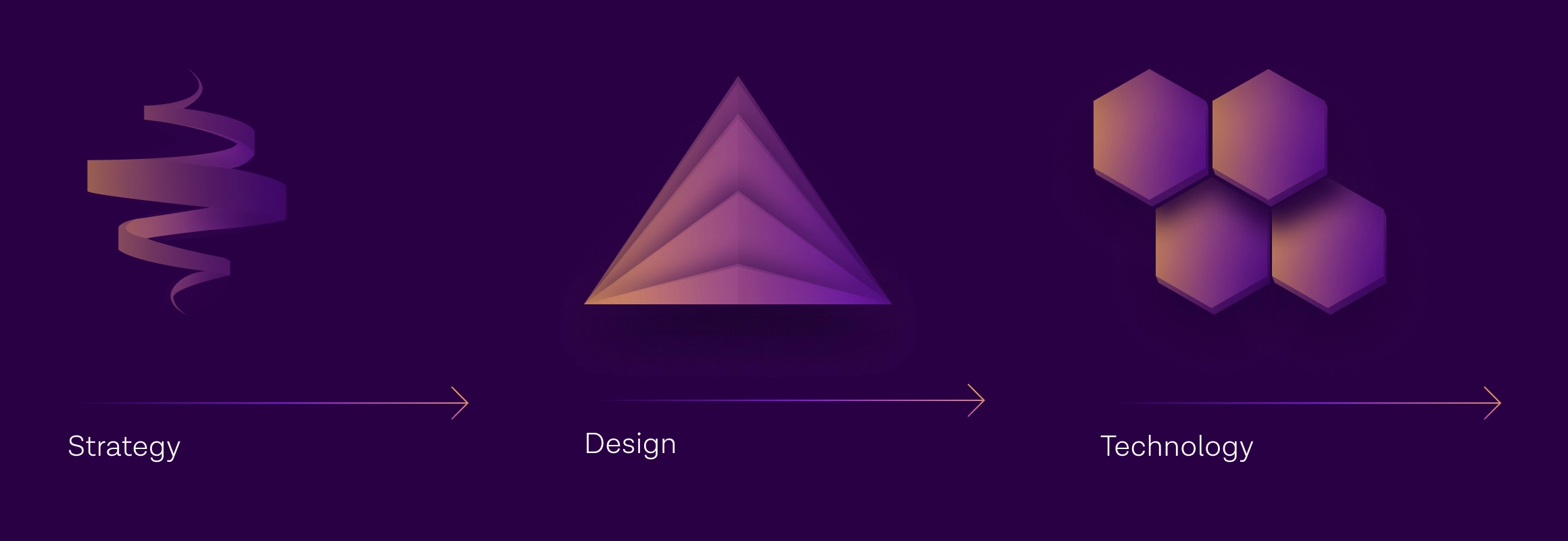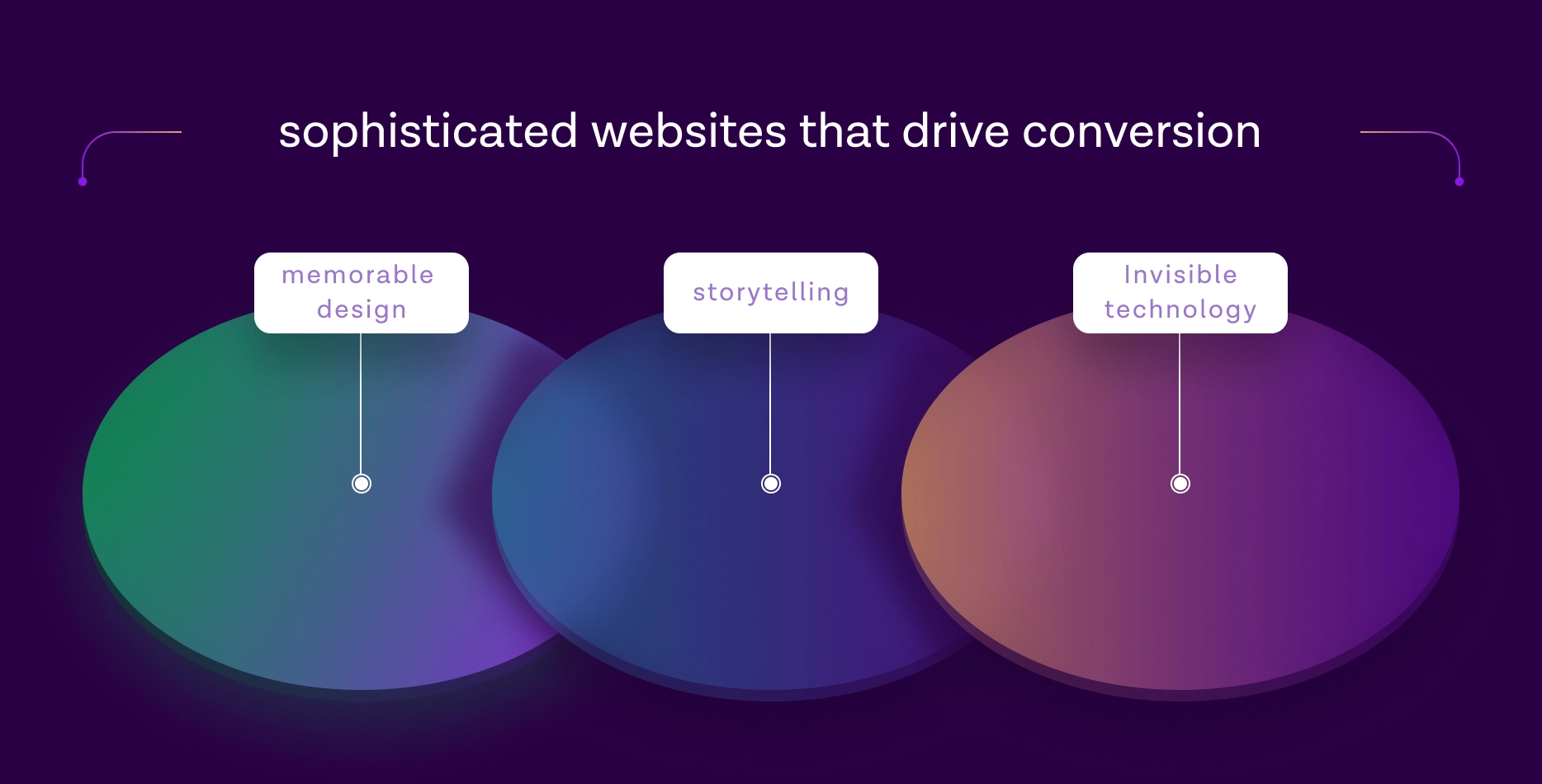3 ‘Silos’ That Can Break Your Website Redesign

After you get funded, things happen very quickly. Teams expand, the number of projects grow. People start running in different directions without even realizing it. Instead of having a single, shared vision, people operate in teams and independent pods—silos. Everyone is busy, and it seems like a lot of work is getting done, but your messaging can fall out of alignment with your company’s vision.
Growing tech companies have an alignment problem.
After you get funded, things happen very quickly. Teams expand, the number of projects grow. People start running in different directions without even realizing it. Instead of having a single, shared vision, people operate in teams and independent pods—silos. Everyone is busy, and it seems like a lot of work is getting done, but your messaging can fall out of alignment with your company’s vision.
You may not feel it, but your customers will.
In a survey of sales and marketing leaders, 63% said sales and marketing misalignment within the company is a key barrier to growth. Perhaps even more stark is the fact that 83% of those surveyed said customers leave because of a lack of steady, relevant messaging.
More often than not, the disconnect manifests on the company’s website.
Chances are you already feel a disconnect between your current website and your mission, and are considering a website redesign. The problem is that redesigning your current website is a big job. If your efforts are misaligned, you can burn through a pile of money and resources and still end up with a website that’s no better than where you started.
The root cause of this misalignment? Silos.
Specifically, silos within the website redesign process.
Three specific types of silos lead to these problems:
- Brand vs Website Silos
- Goals vs Deliverables Silos
- Strategy vs Design vs Technology Silos
When you’re redesigning your website, you need to break down these silos to create a clear, cohesive message that represents your brand and resonates with your potential customers.
Let’s unpack each silo.
1. Brand vs Website Silos
First things first.
Do you update your branding or your website first?
This is one of the most common questions people ask us about building a website for a growing technology company. They know their website is outdated, but they also know they need to clarify their brand before they update their site.
But why are these seen as separate initiatives?
Your brand and your website are inextricably linked.
This is a false dichotomy that prevents progress and creates a misalignment.
Breaking Down the Silo
On average, companies redesign their website about once every three years but only update their brand once every 7-10 years.
Instead, these two processes should happen in tandem.

The website redesign process can be a building block to thinking deeply about your brand’s message, audience, and evolving story.
They’re making the decision in ⅓ the blink of an eye.
Certainly, no small part of that lightning-quick decision-making process is powered by the perception of credibility that’s displayed (or not displayed) on the site.
But not if the process starts with questions like: What color palette do you want to use? Or, what photo do you want to be on the home page?
Building a new site shouldn’t begin with those types of tactical decisions.
Instead, it should begin by answering deeper, strategic questions:
- What audience(s) are we serving?
- What are the pain points we’re solving for them?
- Do we have credible support/proof for differentiation?
- How do they see our brand in its current state?
By the way, these are not easy questions to answer, and it may help to work with a partner with deep expertise in this area to help you get the most out of this process. But it is necessary, and finding the answers to these tough questions is the key to a smooth website redesign project that achieves big-time results.
2. Website vs Marketing Silos
All too often, building a new website is treated as a tactic.
It’s just a box that you check in the marketing mix.
Most website design agencies are happy to run the project like a fixed deliverable—they are content to help their clients check off the boxes and hand off the project with a nice little bow on top. Clients may get a site that looks good but doesn’t drive sales because it isn’t aligned with your brand and messaging.
Instead, website redesign should be viewed through a strategic lens.
Every strategy should begin with a goal–including your website redesign strategy.
So, ask yourself: What is the goal of your website redesign?
Why are we redesigning the site in the first place?
Breaking Down The Silos
Begin the website redesign process by answering these key questions.
High level, it falls into 1 of 2 buckets:
- We just need a new website
- We are trying to achieve some larger business objective
If you’re truly looking for a simple facelift — your website just needs to have the latest animation trends or parallax effects — then you can move forward with that goal in mind. But websites that start here end up looking nice on the surface but perform poorly in almost every other way.
More than likely, you’re looking for a website that helps you achieve some kind of business goal, like:
- Reposition the business to align with a new marketing strategy or product development
- Attract new customer audiences
- Improve organic search visibility (SEO)
To break down this silo, we need to understand what strategic purpose your website serves as part of your overall marketing strategy and the goals it will help you achieve.
3. Strategy vs Design vs Technology Silos
When you hire an agency to redesign your website, you hire them to do three main tasks:
- Strategy
- Design
- Technology
These are the basic building blocks of every website. But just because you can enumerate them as the ingredients doesn’t mean they should be performed separately.
Most companies have: A strategist. A designer. A developer.
The strategist does research and puts together a plan.
They hand the plan off to the designer.
The designer makes it look pretty.
The designer hands it to the developer.
The developer builds it.

All along the way, you’re playing a game of telephone — losing a bit of context each time the project gets passed off, further removed from the original intent.
Pretty soon, the website you end up with is totally out of sync with your original, stated goals.
This is a particularly pervasive problem for “full-service” agencies that offer a variety of services, including website design.
Breaking Down the Silos
The way to solve this problem is simple with the right execution.
The team that builds your website should use an integrated approach to marry strategy, design, and technology into a single process for building sophisticated, business-focused websites.

The key to this approach is that no decision is made in a vacuum.
This is the approach that we use at eight25 – to help some of the world’s best technology brands redesign their website and level up their marketing strategy.
Integrating Storytelling, Brand, and Technology
For the last 20 years, website redesign strategies have focused on tactics to reach goals like changing layouts or graphics, reducing bounce rate, lead generation, improving SEO, or boosting conversion rates. Tactics are important, but focusing only on tactics is missing the forest for the trees.
A website design strategy must be founded on your story, aligned with your brand, and optimized by invisible, seamless technology to form a meaningful emotional connection with users at every step of their journey and drive conversion.
The website’s job is to integrate these three elements.
Storytelling creates emotional connections with users, design builds trust and credibility, and technology brings story and design to life.
A successful website redesign starts with a story.
Let’s connect to discuss how we can tell your story without silos.